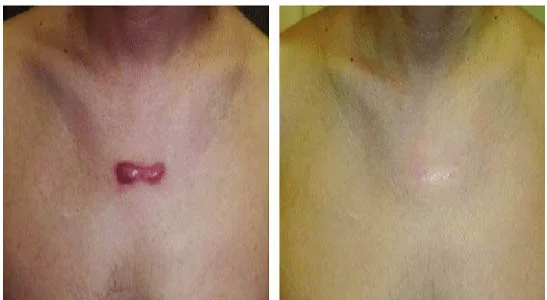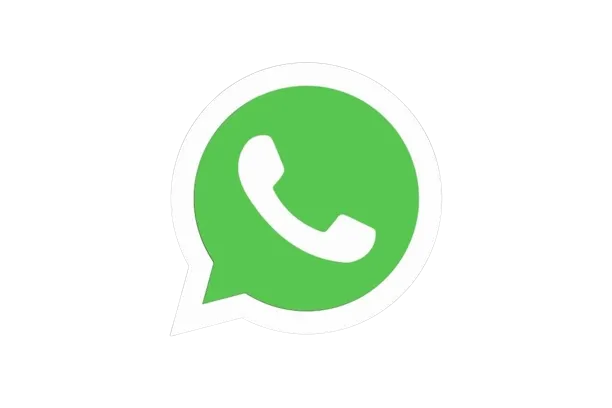Keloid and Hypertrophic scars are fibro-proliferative disease of a skin and that are caused by skin problems and abnormal healing of the injured or irritated skin similarly as trauma, burn, surgery, vaccination, skin piercing, acne, and herpes zoster.
Keloid scars are raised; round or round with regular perimeters and some with irregular perimeters have a grouser claw-like look. Keloids are firm with a smooth face and extend beyond the edges of an original crack or trauma.
Keloids can occur in any part of the body of an individual but occur mainly on over the face (low part), neck, ears, chest, shoulders, and upper arm. They are frequently created with itching, pain, anxiety or depression, and disruption of daily activities. The keloids are in many colors such as Colour and texture of the keloid scar is brown to dark brown and pink to cherry red, Keloids are firm, rubbery lesions or shiny, fibrous nodules.
Hypertrophic scars are common, slightly very lower than keloid, and they develop directly at a crack point, and they do not go beyond the bounds of injury. They are frequently raised, red, and regress over time.
Hypertrophic scars are very flexible in nature and deposited with more amount of collagen and fibrous connective tissues and they frequently contain nerves and blood vessels.
Keloids & Hypertrophic scars both are raised to have a heaped-up appearance. Hypertrophic scars rise above the rest of the skin, in the someway keloid remains elevated above 4mm to the skin surface.
The treatments for Keloid and hypertrophic scars are very common, but the hypertrophic scars have a better prognosis with age. Hypertrophic scars can fluently be treated and it possible to give treatment to hypertrophic scars however keloids are resistant to treatment. For keloids Treatment is based upon the depth, size, and location of keloid on the body. History of previous treatment and its response is more important before starting the treatment.
The two most common and effective treatments are:
Topical silicone gel or creams or sheets are useful to some extent.
Intralesional steroid or 5FU or verapamil injections are often used to stop the growth of keloids. Injecting long-acting cortisone (steroid) into the keloid once a month is the most effective first-hand treatment.
Retinoic acid, Interferon (IFN) therapy, doxorubicin, bleomycin, imiquimod 5% cream, tamoxifen, and tacrolimus. Antiangiogenic factors, including vascular endothelial growth factor (VEGF) inhibitors (eg, bevacizumab), Photodynamic therapy, UVA-1 therapy, transforming growth factor (TGF)–beta inhibitors, tumor necrosis factor (TNF)-etanercept, which are all directed at decreasing collagen synthesis.
Compression therapy or Pressure garments it suppresses collagen production. Occlusive scar dressings should be worn for at least two to three months and can be extended as per requirement. Treat secondary infection in time, drain the abscess and sinus, and remove coiled hair inside the keloid.
Cryotherapy refers to a treatment in which surface skin lesions are frozen. Liquid nitrogen is the most common cryogen used by dermatologist (–196°C) most commonly used for small or limited keloids, most suitable and is often used parallel to steroid injections.
Laser therapy: very good at improving skin texture and color, and in combination with other treatments flatten out the keloid.
Pulsed Dye Laser: PDL is most effective if used early and in combination with other techniques. The principal effect of a pulsed dye laser is on scar microvasculature, reducing erythema and pruritus, and improving skin texture and significant improvement in the scar.
Long Pulsed 1064 Nd:YAG: This laser was developed for the treatment of vascular diseases, including inflammatory scars that works by suppressing neovascularization in hypertrophic or keliod scars, which are characterized by vessel overgrowth that results in nerve fibers and collagen in the reticular layer of the dermis.
Fractional Co2 creates deep channels into thick scar tissue with debulking mode; and if used in combination with collagen remodelling agents can almost flatten the hypertrophic scar and keloids. The procedure is required for few consecutive months.
Fractional MNRF and individual radiofrequency devices in combination with cryo and intralesional steroids give excellent results.
Enerjet: Hyaluronic acid (HA) is a glycosaminoglycan that plays an important role in the reorganization of the extracellular matrix (ECM) during the skin wound healing process. Decreased presence of HA is a major characteristic of keloid and hypertrophic scarring. Enerjet uses Jet Volumetric Remodelling (JVR) technology a high-pressure jet technology to laterally introduce healing agents deep into the dermal layer of the skin for the reduction of keloid.
Surgical excision: Surgical Removal is can be done for larger, more extensive, and especially over the ears. The technique involved may employ a scalpel, radiofrequency device, or CO2 laser removal. It’s better to avoid surgical excision as it may result in a new keloid, and even larger than the original one.
Radiation therapy: carried out soon after surgery
We at Clear Skin laser centre provide all the above mentioned, advance, and evidence-based laser keloid treatment. Treatment protocol for the management of these scars will extend from 6 months to 2 years; once in a month as out-patient based sessions.
We at Clear Skin Centre treat keloid and hypertrophic scars with:
| DO | DON'T |
|---|---|
| Do consult the expert skin professional treating the same. | Do not expose to sun |
| Do use a broad spectrum sunscreen daily | Do not go for ear or body piercing and tattoos |
| Do use a protective clothing on outdoor to protect the scar | Don’t pop pimples |
| Do be careful while shaving to prevent nicks and cuts | Do not scrub or scratch your skin too roughly |
| Do treat the injuries and burns immediately | Do not ignore at initial stage of formation |
| Do take care if you have acne and maintain a proper skincare regimen | Do not go for cosmetic surgery, if family or in personal have keliod tendency |
| Do massage the scar | Do not smoke, as it decreases blood circulation in the skin and inadequate wound healing and possibly tissue loss |
| Do keep the wound moisturized | Do not have un-realistic expectations from the treatment |

